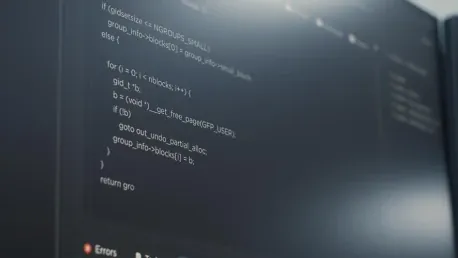The Crown Prosecution Service (CPS) has embarked on a transformative journey by adopting low-code platforms to overhaul its digital applications. This strategic move aligns perfectly with the UK’s ‘Cloud First’ approach towards digital services that commenced over a decade ago. The integration of low-code solutions has drastically enhanced CPS’s efficiency, cost-effectiveness, and its ability to respond swiftly to user needs. The adoption of such innovative technology marks a significant step forward in modernizing their methods, providing a blueprint for other public sector organizations attempting to navigate similar technological transitions.
Overcoming Outdated Technological Processes
Initially, CPS greatly relied on outdated technological processes, which posed significant challenges in maintaining effective operations. The organization faced severe limitations due to constrained IT talent and budgets, making the modernization of its systems a strenuous task. Furthermore, paper-based processes and digitized tools with performance and functionality issues further exacerbated these challenges, limiting the organization’s potential to improve efficiency and service delivery.
The pivotal transition to cloud-based solutions marked a significant shift for CPS. By leveraging the OutSystems low-code platform, CPS proceeded to develop 38 new applications that significantly boosted operational efficiency and user experience. This technological leap was critical in addressing the severe limitations posed by their outdated systems. The shift highlighted the importance of modernizing legacy systems to sustain long-term operational efficiency and enhance productivity across the board.
The Challenges of Limited IT Resources
One of the principal challenges faced by CPS was the scalability of its IT framework. With approximately 7,000 employees focusing on ensuring justice for crime victims, there was an evident and pressing need for expansive IT expertise. Unfortunately, such expertise was not readily available within the organization. Liz Thomason, the head of software engineering at CPS, emphasized that the organization lacked the tools, skills, and processes necessary to support traditional development methodologies, thus necessitating a paradigm shift towards scalable solutions.
Initially, Thomason led a small team of developers, which later expanded to nine specialized professionals. She began the process by identifying tools that could show early value and quickly build her team’s skills. This exploration led to the discovery of OutSystems, a robust low-code platform backed by customer success services offering advice and upskilling opportunities. Such a focused approach in identifying scalable solutions provided the foundation for CPS to build a proficient and agile development team, capable of addressing the organization’s diverse technological needs.
Early Successes with Low-Code Applications
After only six months, Thomason and her team delivered their first successful application, which was designed to gather data for standard operating procedures. This application processed over a million records, demonstrating immediate value and confirming the potential benefits of low-code platforms. Subsequent applications encompassed reusable common features, integrations, authentication mechanisms, replacements for legacy applications, and smaller apps to enhance internal processes.
These newly developed applications provided intuitive interfaces, enabled faster data entry, and featured built-in reporting, all of which significantly enhanced day-to-day operations. An important development was the Advocate Panel app, which streamlined the application process for barristers and solicitors to join CPS advocate panels, replacing a previously laborious manual process. This transition from manual to digital processes underscored the advantages of low-code technology in improving organizational efficiency.
Streamlining Internal Processes
Another notable achievement was the digitization of the witness expense claims process, which significantly reduced the time for reimbursement from several weeks to just about a day. User feedback indicated high satisfaction levels with the new, efficient system. Each of these applications took an average of four months to develop, showcasing the impressive efficiency of the low-code approach.
The ability to focus on developing new features while the platform overhead was managed by the supplier also reduced maintenance costs significantly compared to traditional development methods. This allowed the CPS to concentrate more on delivering value through innovative applications rather than being bogged down by maintenance issues. These changes marked a notable improvement in the CPS’s ability to streamline internal processes and enhance overall organizational efficiency.
Embracing an Agile Mindset
A pivotal aspect of CPS’s success was its strong focus on reusable components and an agile development mindset. The visual development environment provided by low-code platforms allowed for rapid prototyping, development, and the release of early solutions. This approach enabled CPS to respond to user needs with much greater efficiency and adaptability, ensuring that the technology solutions remained relevant and useful in a dynamically changing environment.
Looking ahead, CPS aims to build core strategic systems, including the Future Casework Tools portfolio. This encompasses the Case Management System, witness and management information systems, and associated applications. The organization’s commitment to adopting a user-centric approach, seamlessly blending low-code front-end logic with integrated data solutions, will be crucial in achieving these ambitious goals. This forward-thinking strategy ensures that CPS is well-prepared to meet the demands of the future while continuing to deliver high-quality justice services.
The Growing Low-Code Market
The growing low-code market, projected to reach $36.43 billion by 2027, exemplifies the increasing reliance on such platforms across various sectors. Bradley Shimmin, an analyst at Omdia Applied Intelligence, remarks that low code is part of a broader trend of abstracting code for wider use. This abstraction allows businesses to optimize their operations and seize new opportunities, highlighting the transformative potential of low-code technology.
The future evolution of low-code platforms could involve generative AI, potentially opening up access to multiple programming languages. Although current technology is not yet mature enough to fully realize this potential, it represents an exciting avenue for future development. Shimmin, however, cautions that regardless of the development approach, companies must still address broader IT issues such as technical debt. Increasing software capabilities inevitably entails ongoing code maintenance and the need for continuous improvement.
Key Takeaways and Future Directions
The Crown Prosecution Service (CPS) is undergoing a major transformation by adopting low-code platforms to revamp its digital applications. This strategic decision aligns seamlessly with the UK’s ‘Cloud First’ initiative aimed at enhancing digital services, which started over a decade ago. By integrating low-code solutions, CPS has significantly boosted its efficiency and cost-effectiveness, while also improving its ability to quickly address user needs. The move to embrace such cutting-edge technology represents a substantial advancement in modernizing CPS’s operations. This sets a valuable precedent for other public sector organizations looking to navigate similar technological changes. The CPS’s approach not only modernizes its processes but also provides a roadmap for other government institutions aiming to enhance their digital capabilities. Additionally, this shift underscores the importance of innovative solutions in driving forward public sector efficiency and responsiveness. It signals a broader trend towards adopting flexible, scalable technologies that can meet the evolving demands of public service users.








